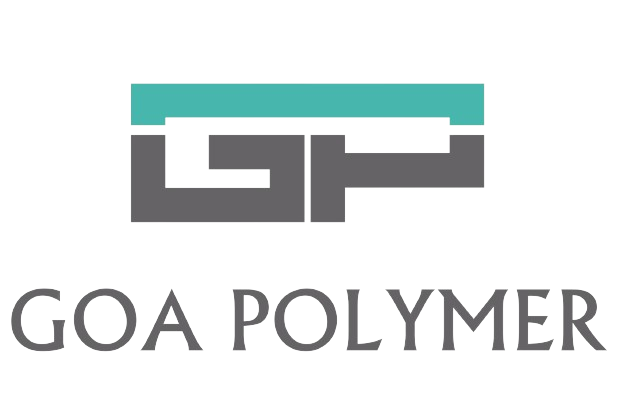In the world of materials used for various industrial and commercial applications. PTFE is a well-known and useful compound. But did you know that PTFE can be mixed with other materials like bronze or glass to impart some other properties? These are known as Bronze Filled PTFE and Glass Filled PTFE. Both variations have certain benefits that suit certain requirements. The blog will cover what these materials are, how they differ from one another, and when to use each.
What Is Bronze Filled PTFE?
Bronze-filled PTFE combines PTFE with small bronze particles to create a special composite material. This mixture brings out the best features of both PTFE and bronze. Bronze, a copper and tin alloy, makes the end product stronger and more durable. The bronze particles when mixed with PTFE improve the material’s ability to resist wear and conduct heat.
Advantages of Bronze Filled PTFE
- Better Resistance to Wear: The bronze material enhances wear resistance to effectively protect mechanical components from abrasion encountered during contact operations.
- Better Thermal Conductivity: The introduction of bronze metal results in enhanced heat transfer properties among materials that prove beneficial for operations at extreme temperatures.
- Strength: The strength of bronze-filled PTFE allows materials to endure tough operational environments.
What Is Glass Filled PTFE?
The Glass filled is a finely ground glass fiber of PTFE. Its Strength and Stiffness make it popular among manufacturers. The Stability and Wear Resistance properties make it different from bronze-filled PTFE. It works well with polymer industry applications. It utilizes glass fibers and enhances its performance.
Advantages of Glass Filled PTFE
- High wear resistance: Glass filled PTFE is ideal for its high resistance power. It is a well known component chosen by the manufacturer.
- High dimensional stability: Glass-filled PTFE is a stable component under high temperatures. It does not lead to deformation due to mechanical stress.
- Increased Strength and Stiffness: Glass Filled PTFE is stiff and strong. This property is useful in many plastic product manufacturing.
Key Differences Between Bronze-Filled PTFE and Glass-Filled PTFE
Understanding the difference is important before their use. Here is a detailed difference between both compounds:
| Property | Bronze Filled PTFE | Glass-Filled PTFE |
| Filler Content | 40–60% bronze powder | 15–25% glass fiber |
| Strength | Very High | High |
| Wear Resistance | Good | Excellent |
| Thermal Conductivity | High | Moderate |
| Electrical Conductivity | Medium | Low (Excellent Insulator) |
| Chemical Resistance | Moderate (Bronze can react) | Very High |
| Common Uses | Bearings, seals, PTFE Gasket | Valve seats, insulators, PTFE Round Flat Washers |
| Color | Brown/Gold | White/Off-white |
| Friction Level | Medium | Very Low |
| Durability of PTFE Gaskets in Extreme Environments | Excellent with bronze, especially under pressure | Excellent with glass, especially in chemical exposure |
Applications of Bronze-Filled PTFE
The combination of strength, wear resistance, and thermal conductivity makes Bronze-Filled PTFE a perfect solution for specific applications. Here are some common uses:
- Bearings and Bushings: The superior wear resistance of Bronze-Filled PTFE makes it a popular choice for producing bearings and bushings in manufacturing applications. The enhanced performance of these parts results from the bronze addition. It also strengthens the materials to handle both friction and pressure forces.
- Gears: Friction in gears stands as a primary issue because it accelerates wear and tear. Gears made from Bronze-Filled PTFE maintain their shape. It protects the material against friction-related damage.
- Valves and Pump Components: Manufacturers operating in the chemical processing sector frequently select Bronze-Filled PTFE. It delivers exceptional performance against wear and heat while resisting environmental conditions.
Applications of Glass-Filled PTFE
The performance of Glass-Filled PTFE material stands out in various applications that differ from those of Bronze-Filled PTFE.
- Valve Seats and Insulation: The material keeps its size well in high heat. This makes it ideal for valve seats and insulation in hot settings.
- Electrical Components: Glass-filled PTFE is used in electrical systems. It has great insulation and can handle high temperatures.
- Pumps and Fluid Handling: Glass-filled PTFE lasts longer in pumps that use aggressive fluids and handle abrasive materials.
Conclusion
Both Bronze-Filled PTFE and Glass-Filled PTFE provide superior material qualities that suit different applications. To select the correct material for your project you must understand their unique benefits for thermal conductivity. PTFE benefits from both materials which improve its properties for extended durability and strength in diverse industrial and commercial applications.
The understanding of material properties along with their applications enables you to select suitable solutions for industrial requirements or project needs. The stability, stiffness and strength of these both materials promotes the durability and efficient outcomes for the manufacturing industries.
Frequently Asked Questions
Experts recommend using Glass-Filled PTFE material for parts which need heavy chemical protection alongside stable dimensions including valve seats and seals and chemical processing equipment components.
PTFE Gaskets which contain either bronze or glass fibers demonstrate superior durability when used in extreme environments such as high temperatures together with high pressures and aggressive chemical exposure.
PTFE with Glass Fiber Filling keeps its electrical insulation capabilities intact thus making it suitable for electrical applications. The electrical insulation capacity of Bronze Filled PTFE decreases because bronze conducts electricity.
Bronze Filled PTFE is suitable for applications that require superior strength and good thermal conductivity along with high load and high-temperature conditions in bearings and bushings.



